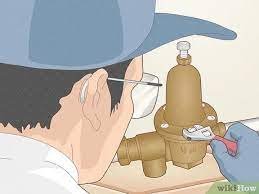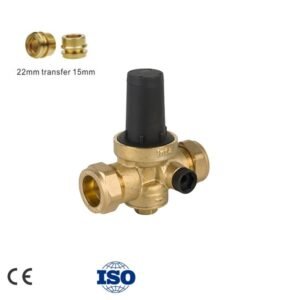Water pressure regulators play an essential role in ensuring the stability and efficiency of your home’s plumbing system. These devices control the flow and pressure of water entering your property from municipal lines, safeguarding against the potential damages caused by excessive pressure. Understanding the location and function of your water pressure regulator can save you from the headaches of leaks, burst pipes, and unexpectedly high water bills. This article delves into the intricacies of water pressure regulators, guiding you through identifying their location, understanding their importance, and recognizing signs of malfunction.
Understanding Water Pressure Regulators
A water pressure regulator, sometimes referred to as a pressure-reducing valve (PRV), is a specialized valve that reduces the incoming water pressure from the city mains to a safer, more manageable level for your home. Typically, municipal water pressure is set high to reach all service areas, including high-rise buildings and fire hydrants, which can be too much for residential plumbing systems to handle.
The regulator uses a spring-loaded diaphragm and valve to automatically adjust the flow of water, ensuring that the pressure within a home’s plumbing system remains within a safe range, usually between 40 to 60 pounds per square inch (psi). This mechanism not only prevents stress on your plumbing fixtures but also contributes to water conservation and energy efficiency.
Where to Find Your Water Pressure Regulator
The location of the water pressure regulator can vary depending on the construction and design of your home, but there are common places where you can start your search:
- Near the Main Water Shut-Off Valve: The most common location for a water pressure regulator is near the main water shut-off valve of your home. This valve is typically found where the main water line enters your home, which could be in the basement, garage, or an exterior wall.
- Close to the Water Meter: In some homes, the regulator is installed close to the water meter, which may be located in the basement, on an exterior wall, or in a box buried near the property line.
- Utility Areas: Check in utility areas or where the water lines enter the house from the ground. This could be near a foundation wall or within a utility closet.
- Exterior Locations: In warmer climates, the regulator might be located outside the home, close to where the main water line enters the property. It’s usually housed within a protective box or directly on the line near the home’s foundation.
Recognizing a Water Pressure Regulator
Identifying a water pressure regulator is straightforward once you know what to look for. It is typically made of brass and has a bell-shaped or conical top. A screw at the top of the device allows for adjustment of the water pressure. However, it’s advisable not to adjust the regulator without proper knowledge or guidance from a professional plumber.
Signs of a Malfunctioning Water Pressure Regulator
Knowing the signs of a failing water pressure regulator can help prevent costly repairs and damage:
- High Water Pressure: If you notice water coming out of taps with too much force, or if appliances are leaking or making noise, it could indicate that the regulator is not reducing pressure properly.
- Low Water Pressure: Conversely, too low water pressure might suggest that the regulator is overly restricting the flow.
- Water Hammer: This is a banging noise in the pipes, usually occurring when a tap is turned off quickly. It can indicate that the water pressure is too high.
- Varied Water Pressure: Experiencing fluctuations in water pressure when no other water is being used could also point to regulator issues.
Maintaining Your Water Pressure Regulator
Routine checks and maintenance are crucial for the longevity of your water pressure regulator. It’s recommended to have a professional plumber check the regulator during annual plumbing inspections. The lifespan of a water pressure regulator is typically around 5 to 10 years. If you experience any issues with water pressure in your home, it may be time to have the regulator inspected or replaced.
Conclusion
Understanding where your water pressure regulator is located and recognizing its function within your home’s plumbing system is crucial for maintaining an efficient and damage-free water supply. Regular inspections and knowing the signs of malfunction can help in early detection and repair, ensuring a steady and reliable water pressure. If you’re unsure about the state of your water pressure regulator or if adjustments are needed, it’s always best to consult with a professional plumber. Ensuring that your water pressure regulator is functioning correctly is not just about protecting your plumbing system; it’s also about conserving water and saving on utility costs.
FAQs
- What happens if I don’t have a water pressure regulator?
- Without a water pressure regulator, your home’s plumbing system may be exposed to the full force of the municipal water supply, potentially leading to pipe damage, leaks, and inefficient water usage.
2. Can I install a water pressure regulator myself?
- While it’s possible for those with plumbing experience, installing a water pressure regulator involves understanding local plumbing codes and proper adjustment of water pressure. It’s recommended to have it installed by a professional plumber.
3. How do I know if my water pressure is too high or too low?
- You can use a water pressure gauge, available at most hardware stores, to measure the water pressure in your home. Screw it onto a hose bib and open the valve to get a reading.
4. What is the cost of replacing a water pressure regulator?
- The cost can vary depending on the model and the complexity of the installation but typically ranges from $250 to $350, including parts and labor.
5. Can adjusting the water pressure regulator solve my water pressure issues?
- Adjusting the regulator can solve issues related to high or low water pressure, but it should be done by a professional to avoid causing further problems.
By familiarizing yourself with the location and operation of your water pressure regulator, you can take proactive steps to ensure your plumbing system remains efficient and secure, protecting your home from the potential perils of unregulated water pressure.






